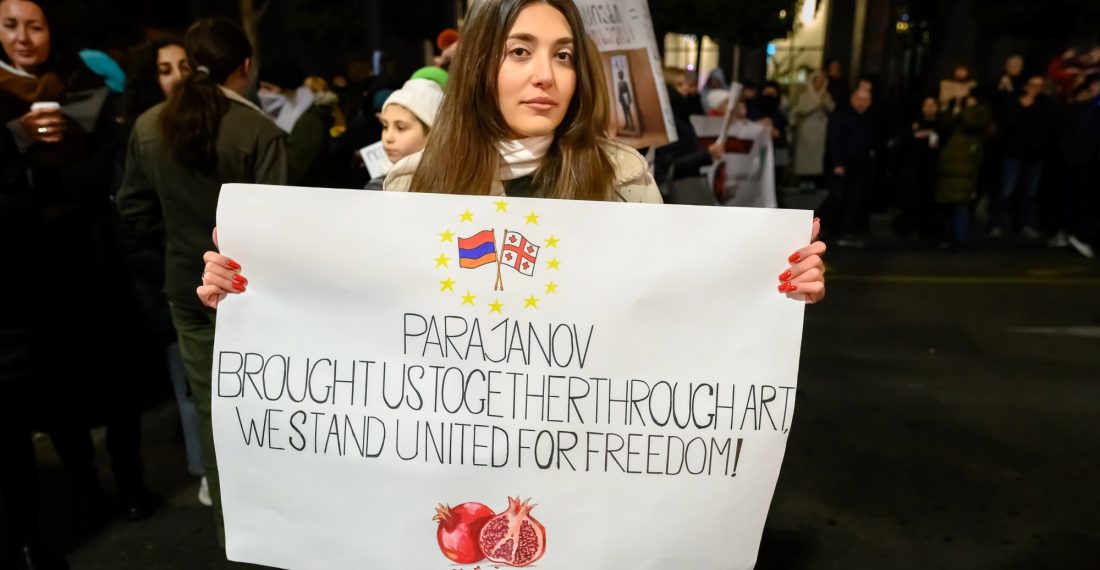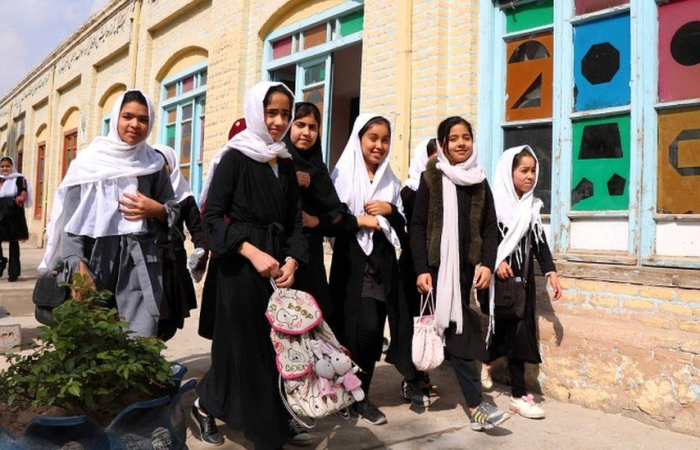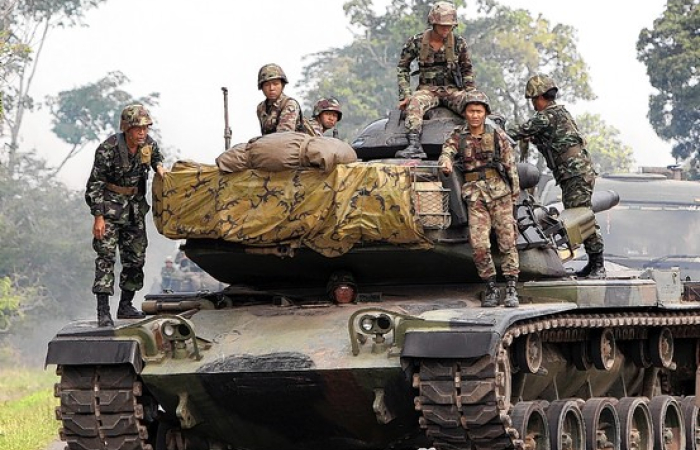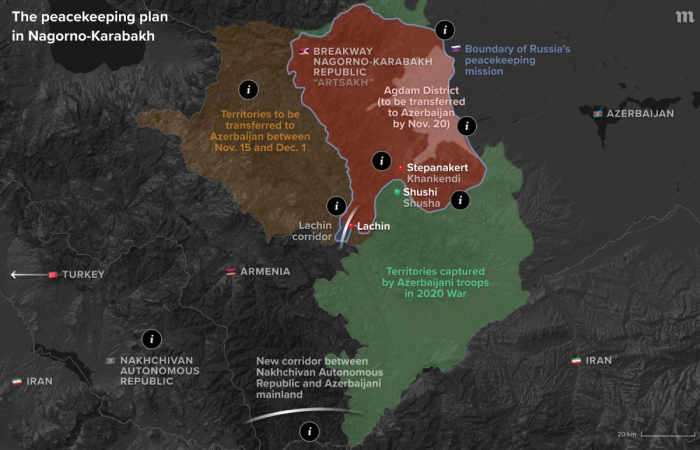After the controversial victory of the ruling party in Georgia’s parliamentary elections on October 26, it initially appeared as though the opposition was in disarray. Many observers expected widespread protests and a dramatic confrontation between the two sides, but that did not materialise straight away. Instead, two days later, a solitary protest took place, drawing no more than 19,000 participants that appeared downtrodden and forlorn.
That was to change by the end of November, however, when Georgian Prime Minister Irakli Kobakhidze announced that the country would suspend talks with the European Union over membership until 2028. The bombshell statement was all the more unexpected given that the EU had anyway suspended talks with Tbilisi over concern with two pieces of legislation – one concerning the foreign financing of NGOs and another concerning LGBT rights – adopted earlier last year.
Until then, however, some opposition supporters had already started scapegoating ethnic minorities for voting for the government party despite this being par for the course. Minorities are careful not to irk whoever is in power.
Already there had been attempts to manipulate ethnic groups for political purposes. The first came from pro-government media in early October when Mamuka Khazaradze, co-founder of the opposition Lelo party, was effectively accused of being of ethnic Armenian origin. Khazaradze denied the claims but added that if he was then he would acknowledge it proudly. “Long live a strong Georgia with its diversity,” he proclaimed.
Following the vote, however, it didn’t help when Armenia’s Nikol Pashinyan and Azerbaijan’s Ilham Aliyev were among the first to quickly congratulate Kobakhidze. Both Armenia and Azerbaijan are highly dependent on stability in Georgia for trade and the two largest minorities are ethnic Armenians and Azerbaijanis. Then Georgian President Salome Zourabichvili also didn’t help when she used the term “Armenian carousel” to describe alleged government falsification.
It is perhaps no wonder that ethnic minorities subsequently remain mainly invisible at the current protests. Some Georgians already view them as “guests" rather than as equal citizens born and raised in the same country. The opposition anyway didn’t campaign among ethnic minority voters. The protests are also almost entirely in Tbilisi with only small gatherings in the regions.
Pro-opposition social media accounts had also highlighted how far-right nationalist groups such as the Ultras were manning the frontlines of the protests to engage in battles with police using fireworks. In mid-October, the Ultras had already triggered controversy when they unfurled a banner declaring “death to separatists” in central Tbilisi directed as much against ethnic Ossetians and Abkhazians in Georgia’s two breakaway regions as it was against Russians.
It should be noted that many of those battling police at the protests have since been arrested. Without them, the protests are peaceful without exception.
Even so, the issue of minorities re-emerged during the protests on 22 December when a joint march by ethnic Armenians and Azerbaijanis was announced, accompanied by a graphic of the Armenian and Azerbaijani flags together. Many Georgians reacted harshly, demanding that the only flag to be depicted should be Georgian. While minorities do consider themselves Georgian citizens, most also maintain a dual identity embracing both identities.
Some Georgians considered the announced march a “provocation,” and not least when it became known that it would start from two points in the city. For ethnic Armenians that was in the Avlabari district where many live. For ethnic Azerbaijanis, it was to start at the Heydar Aliyev Park in Abanotubani.
Pro-EU members of the two communities were also against the marches, especially two increasingly visible activists – ethnic Armenian Giorgi Tumasyan and Samira Bayramova, an ethnic Azerbaijani. In response to the controversial joint march, they instead organised their own to be held a day beforehand. Theirs, a march of unity, would be for all ethnic groups and not just the two largest.
Anyone participating, however, was instructed not to bring flags other than those of Georgia or the EU. This was clearly a reference to the Armenian or Azerbaijani flags no matter how it was worded. Ironically, an hour before, a march of Georgian Alumni of British Universities was held with the Union Jack prominently displayed, a country that in 2016 voted to leave the EU.
Nonetheless, a few did flout the restrictions on national symbols. One held a tiny Azerbaijani flag while another held a placard with the Armenian and Georgian flags drawn together at the top above a reference to Sergei Parajanov, the notable ethnic Armenian filmmaker born in Tbilisi whose work heavily incorporated Armenian, Azerbaijani, Georgian, and Ukrainian symbolism.
Tumasyan and Bayramova’s concerns were understandable. The use of the flags of neighbouring countries with sizeable ethnic populations in Georgia could be misconstrued as separatism, it was explained. Some ethnic Armenian participants also said most of their friends and relatives did not participate because they felt isolated and excluded from local politics. This is ironic given that one fringe ultra-nationalist party recently accused Armenians of being behind the protests.
To Tumasyan and Bayramova’s credit, they are at least attempting to better integrate minorities as citizens. There is certainly the need.
As for the more controversial joint march, it failed to materialise the next day despite eventually being included in the official list of marches planned as part of the protests. Even then it had also been announced that any Armenian and Azerbaijani national symbols were prohibited. Hours later, that instruction was changed to the flags of “foreign countries,” but the message was clear. This was further demonstrated just a few days later.
On 30 December, Georgian special forces were deployed to the ethnic Azerbaijani village of Nakhiduri after two local teens were killed by a drunk driver. When the ambulance arrived, medical personnel treated the ethnic Georgian driver before the two ethnic Azerbaijanis. Residents attacked the crew. Though one of the ethnic Azerbaijanis had died instantly, the other died later in hospital. Whatever the outcome of the current protests, that situation must change.






